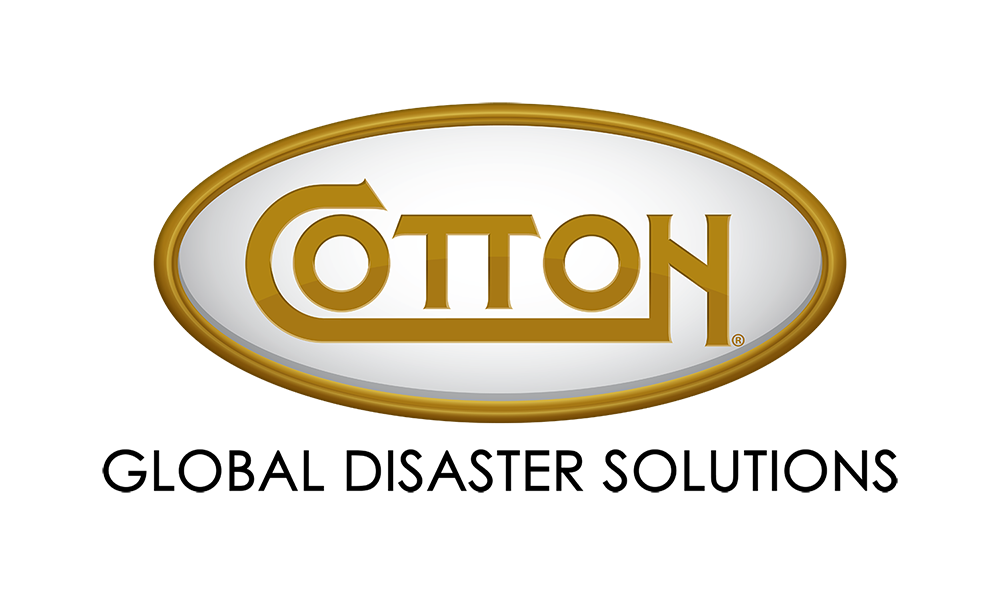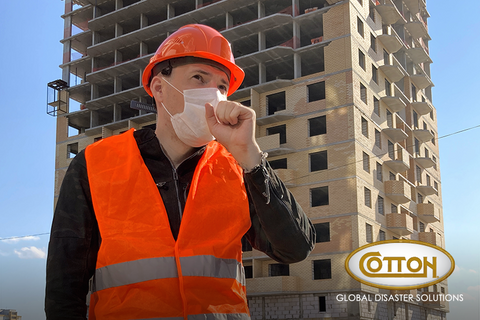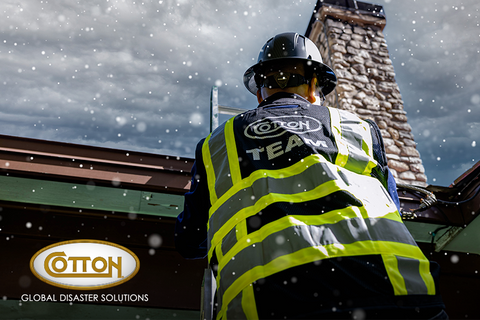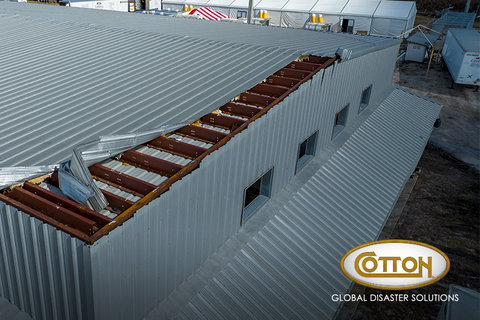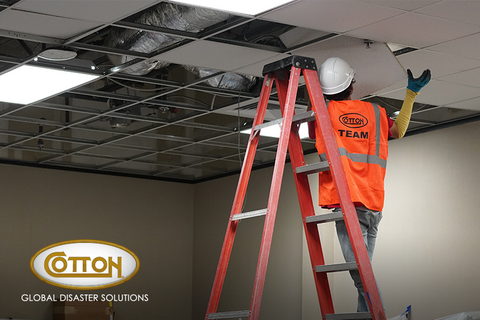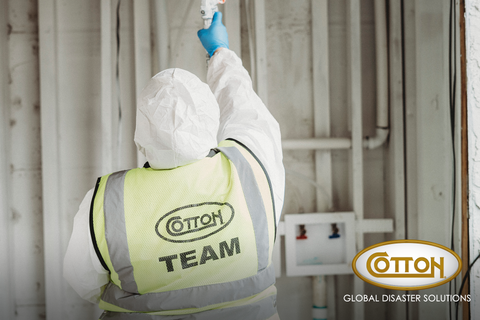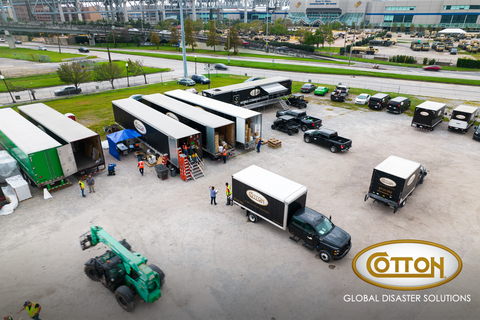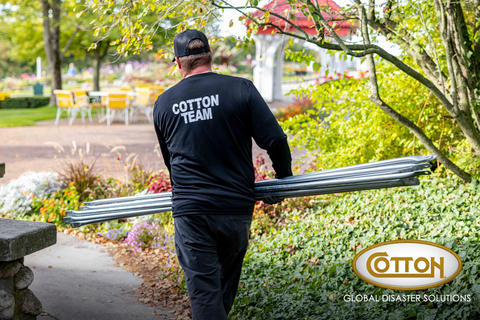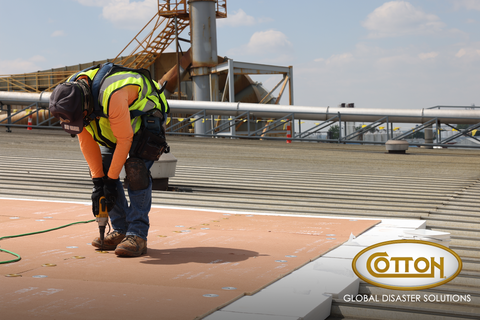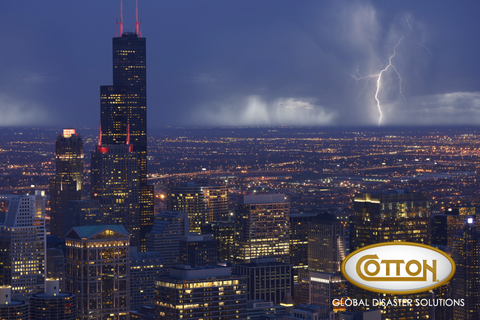News
HOW UNTREATED SMOKE DAMAGE CAN IMPACT YOUR HEALTH
In the aftermath of a fire, the focus often gravitates toward visible damage: charred structures, soot-covered belongings and the daunting task of rebuilding. Yet amidst these overt signs of destruction lurks a silent threat that often goes unnoticed: smoke damage. While its presence may not be as immediately apparent as flames, untreated smoke damage poses significant health risks that can linger long after the fire has been extinguished.
We’ll delve into the often-overlooked consequences of smoke damage and explore how it impacts your health in ways that may surprise you. From respiratory issues to cancer risks, understanding the true extent of smoke damage is crucial for safeguarding the health of your employees, tenants and guests.
Understanding Smoke Damage
Smoke damage can result from something as simple as a cooking mishap or something as complex and devastating as a fire within your facility. Even a wildfire in the area can result in smoke damage, even if the fire never touches your commercial property. Smoke and soot can coat walls,...
moreWas Your Commercial Roof Impacted by Winter Weather?
As the chill of winter begins to fade and we welcome spring, it's a good time to turn our attention to the condition of our roofs. While winter often brings cozy nights by the fire and picturesque snowfalls, it can also pose challenges for our homes' most vital protective layer. From heavy snow accumulation to the formation of stubborn ice dams, the winter months can leave their mark on our roofs if we're not careful.
In this blog, we'll take a look at the impact of winter weather on commercial roofs and what steps you can take to address any damage as we transition into spring. By understanding the common problems roofs face during winter and taking proactive measures, you can ensure your roof remains in good shape for the seasons ahead.
Common Winter Hazards for Your Commercial Roof
Expansion & Contraction
To understand the damage that changing temperatures can have on your commercial roof, we’ll have to take a trip through time back to your high school science...
moreHOW TO CHOOSE THE RIGHT COMMERCIAL ROOFING CONTRACTOR FOR YOUR PROJECT
Whether your roof was damaged in a storm or you’re looking to replace an older roof with one made of a more durable or eco-friendly material, it’s essential to do your due diligence and find the right commercial roofing contractor for your project. After all, a roof is a major investment for your business. But with a wide range of options to choose from and an urgency to get your roof in working order as soon as possible, it can be overwhelming trying to find a partner you can trust.
The team at Cotton Roofing understands the stress that can come from making this type of decision, so we’ve compiled our top four tips for choosing a commercial roofing contractor for your project.
1. Find a Contractor Who Specializes in Your Type of Roof
The first step in finding the right contractor to repair or replace your roof is looking for one that specializes in your roofing material and type. Here are a few questions to consider before searching for a contractor:
Is your roof a flat roof...
DOES YOUR COMMERCIAL HVAC NEED TO BE SERVICED? HERE’S HOW TO TELL
Your commercial property’s HVAC system is kind of like your car’s engine: out of sight, out of mind. People only start to think about theirs when they notice a problem. For your car, you’ll typically figure out something’s wrong when the “check engine” light starts flashing, but your HVAC doesn’t have any direct method for alerting you to an issue. Instead, you need to be vigilant and keep an eye out for these warning signs:
1. Higher-Than-Normal Electric Bills
While your commercial property’s electricity bill can fluctuate month to month based on the temperature outside and other factors, if your electricity usage skyrockets suddenly, this can be a sign there’s a problem with your HVAC system. Track your monthly usage and bills to keep an eye on your HVAC system’s health.
And if you notice a sudden uptick in your electricity usage month over month, schedule a deep cleaning for your HVAC and air ducts to ensure they’re working as efficiently as possible.
2. Burning Smell in Your Commercial Property
If you or your...
moreUNDERSTANDING THE FACTORS BEHIND MOLD GROWTH IN THE SUMMER
As temperatures rise, the atmosphere becomes capable of holding more and more moisture, which essentially means that the hotter it is, the more humid it can become. And while humidity is mostly known for making people sweat, it can also have significant impacts on your commercial property.
If your building reaches a certain relative humidity—about 70%—your walls, flooring, ceiling and contents may begin to absorb some of the moisture, putting these materials at risk for mold. In fact, it only takes about 24 hours for a wet item to begin seeing microbial growth.
As a business, it’s essential to take the steps to prevent mold from growing within your property. If left unchecked, mold can cause significant structural damage, as well as physical symptoms for your employees and customers, such as respiratory issues and allergic reactions.
What Conditions Are Ideal for Mold Growth in a Building?
Mold thrives in dark, humid and warm environments. In general, if the relative humidity inside your commercial building is around 70%, you’re creating...
moreREVEALING THE TRUTH BEHIND COMMON HURRICANE PREPAREDNESS MYTHS
When a hurricane approaches, people often look for last-minute hacks to protect their property, but with anyone able to contribute their advice on the internet, the information you may find isn’t always accurate.
As a leading restoration company, the Cotton GDS team is here to dispel common rumors and help you find the truth to better prepare your business for a storm.
Myth: You Should Tape Your Windows Before a Hurricane.
Many claim that taping a window in an “X” pattern will reduce its risk of shattering during a storm. In reality, taping your windows can lead to larger shards of glass if your windows break, which are often more dangerous than smaller pieces. Instead, move as much of your belongings as you can away from windows and consider partnering with a disaster recovery firm, like Cotton GDS, for emergency board-up services before a hurricane.
Myth: Leaving Your Windows Open a Crack Will Prevent Damage.
In theory, the idea of leaving your...
more2024 Hurricane Predictions & How to Prepare for the Season
The researchers at Colorado State University recently shared their estimates for the 2024 Atlantic hurricane season, which predict that this year's will be much more active than 2023's season, and here’s what they’re saying we should expect:
- 23 named storms
11 hurricanes
5 major hurricanes
With an active hurricane season approaching, it's time to start preparing your home and commercial properties to withstand upcoming storms. Follow along for our tips on how to get started.
Prepping for the 2024 Hurricane Season
Whether you’re preparing your home and family or your business for the upcoming season, it’s essential to make sure everything is ready to go long before a hurricane approaches your community.
First, start stocking up on necessary supplies, and pack go-bags with everything you might need. Check out our...
moreEssential Safety Tips for Spring Construction Projects
For many, the coming of spring signifies the beginning of most major construction projects for the year. As temperatures warm and new year plans are finalized, many use the new season as an opportunity to kick off their construction plans. While the advantages of spring commercial construction services are numerous, it's important to remember the new safety risks that come with the changing seasons.
With rising spring temperatures also comes unpredictable weather and potentially unsafe working conditions. From snow melt after the winter to frequent spring rains and other seasonal hazards, it's essential to be mindful of the best practices to keep your crews safe on the job. Consider the following essential safety tips for spring construction projects developed by Cotton Construction to help keep your job sites safe this season.
Monitor the weather forecast
As much as we may like to plan ahead, spring storms can often pop up unexpectedly or suddenly...
moreIs Your Commercial Roof Ready for Spring Storms?
In general, storms and inclement weather tend to stick to specific schedules throughout the year. While there’s always the potential for outlying storms, people in the Southeast United States can often expect hurricanes in the summer and fall, freezes during the winter and severe thunderstorms in the spring.
The good news about these weather patterns is that you can prepare your commercial property to withstand the unique dangers of each type of storm before they happen. And as we enter spring, it’s essential for you to take steps to protect your roof from hail, rain and high winds.
What Are the Most Common Spring Storms?
In general, spring is known for its severe thunderstorms, which can produce hail, lightning...
moreWhy Severe Thunderstorms Are More Serious for Your Business Than You Think
Seeing a severe thunderstorm warning probably doesn’t elicit the same level of response as a flood advisory or hurricane watch. But that doesn’t mean you should ignore them. Severe thunderstorms—and the subsequent weather that can result from them—are capable of causing significant damage to your commercial property.
How Can Severe Thunderstorms Cause Damage to a Commercial Building?
Flash Flooding
Slow-moving thunderstorms may lead to flash flooding in a community, which can allow water to enter your commercial property. Standing water in a building requires immediate extraction, dehumidification and moisture mapping. Building owners and facility managers who put off these crucial steps may find themselves with mold, making their property unsafe...
more